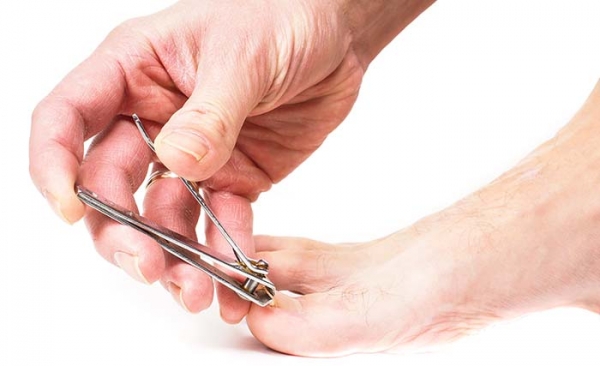Ingrown Toenails: A Common and Unpleasant Pain
Ingrown toenails are a common nail impairment and account for about one in five patients who visit their family physicians with a foot-related problem. Not only is it an unpleasant hindrance, unattended ingrown toenail can escalate into a painful infection.
Causes for Ingrown Toenails
Ingrown toenails chiefly affect the big toenail, but symptoms can also be found on other toes. Ingrown toenails can be attributed to the following factors:
Anatomical Factors:
- Genetic predisposition, such as the natural shape of your toenails and family history
- Excessive sweating
- Diabetes
- Obesity
- Thyroid, cardiac, and renal disorders that may predispose to edema in the lower extremity of the body
Behavioral Factors:
- Improper trimming (cutting toenails at an angle)
- Repetitive trauma (e.g., running, kicking)
- Inadvertent trauma (e.g., stubbing the toe)
- Ill-fitting shoes
- Poor foot hygiene that provides a breeding ground for bacteria and fungi
Symptoms of Ingrown Toenails
At its early stages, the skin next to the nail may become tender, swollen, and harden over time. There will be pain when pressure is applied to the affected area, leading eventually to fluid build-up. When the affected area becomes infected, symptoms will include red, swollen skin; pain; bleeding; oozing pus; and overgrowth of skin around the toe.
Treatments for Ingrown Toenails
For identifying treatment options, it is useful to classify ingrown toenails into three categories according to their severity: mild, moderate, and severe.
Mild Cases:
- Nail-fold swelling
- Redness or rash of the skin
- Pain with pressure
Moderate Cases:
- Increased swelling in the affected area
- Drainage
- Infection
- Ulceration of the nail-fold
Severe Cases:
- Chronic inflammation
- Granulation tissue (bright red growth coming out from the side of the nail)
- Nail-fold hypertrophy
At-Home Treatments
At-home treatments of ingrown toenails are effective in patients with mild to moderate cases of ingrown toenails. They include:
- Soaking the affected toe and foot in warm, soapy water for 10 to 20 minutes, followed by the application of a topical antibiotic ointment such as polymyxin/neomycin (Neosporin) or steroid ointment to the affected area several times a day until the discomfort resolves
- Placing cotton balls soaked with olive oil under the edge of the affected nail. This method was found to provide immediate relief from pain with minimal or no risk of bacterial infection to the site.
- Gutter splinting: a gutter splint can be made with an acrylic artificial nail that is placed under and taped to the affected nail. The gutter splint treatment takes two weeks to three months to complete – the time required for the normal nail to grow.
Surgical Treatment
The most common surgical procedure for treating an ingrown toenails that is not resolved with at-home treatment is through chemical matricectomy, during which the lateral edge of the affected nail is removed. Apart from a narrower appearance after surgery, the nail will grow back to its original width since the nail matrix is not removed during matricectomy,
Post-Surgical Care
Keep the foot of the bandaged toe raised for one to two days and avoid movement and blunt trauma to the operated site. After the bandage is removed on the second day, wear open-toe shoes as much as possible and soak your toe or foot in saltwater daily.
Infection of the affected area generally resolves without the need for antibiotic therapy after surgery; however, if infection of the lateral nail fold is suspected due to an incomplete matricectomy, physicians will prescribe an oral antibiotic that covers common skin-related bacteria growth. Meanwhile, you can manage pain with over-the-counter pain relief medication.
Prevention
- Cut toenails straight across, not at an angle or down the edges
- Wash your feet every day, drying them thoroughly and applying a foot moisturizer onto your feet and toes
- Use a foot file to remove hard or dead skin
- Wear proper-fitting shoes
- Change your socks (or tights) every day to maintain good feet hygiene

